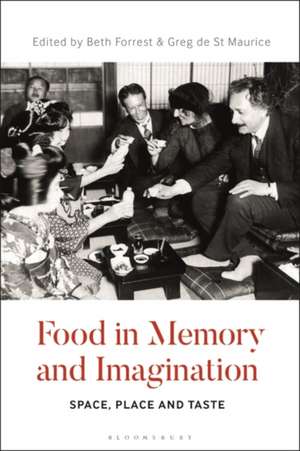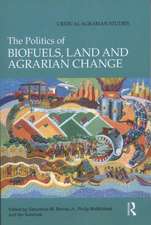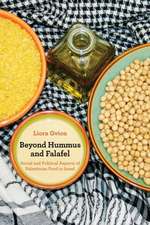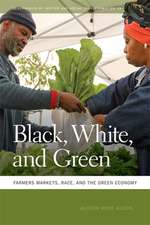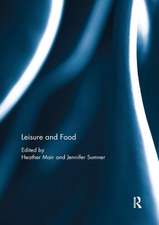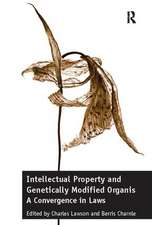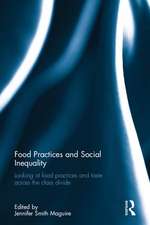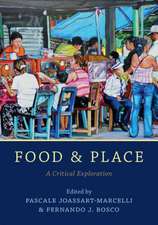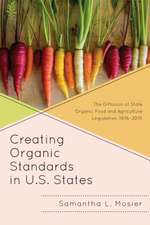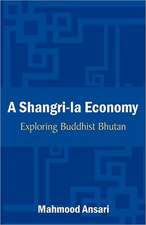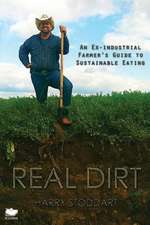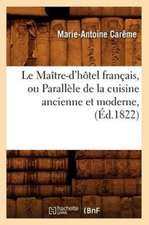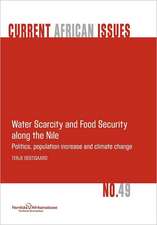Food in Memory and Imagination: Space, Place and, Taste
Editat de Professor Beth Forrest, Dr Greg de St. Mauriceen Limba Engleză Hardback – 9 feb 2022
| Toate formatele și edițiile | Preț | Express |
|---|---|---|
| Paperback (1) | 200.90 lei 6-8 săpt. | |
| Bloomsbury Publishing – 21 feb 2024 | 200.90 lei 6-8 săpt. | |
| Hardback (1) | 837.13 lei 3-5 săpt. | |
| Bloomsbury Publishing – 9 feb 2022 | 837.13 lei 3-5 săpt. |
Preț: 837.13 lei
Preț vechi: 1200.60 lei
-30% Nou
Puncte Express: 1256
Preț estimativ în valută:
160.21€ • 166.64$ • 132.26£
160.21€ • 166.64$ • 132.26£
Carte disponibilă
Livrare economică 24 martie-07 aprilie
Preluare comenzi: 021 569.72.76
Specificații
ISBN-13: 9781350096165
ISBN-10: 1350096164
Pagini: 384
Dimensiuni: 169 x 244 x 36 mm
Greutate: 0.79 kg
Editura: Bloomsbury Publishing
Colecția Bloomsbury Academic
Locul publicării:London, United Kingdom
ISBN-10: 1350096164
Pagini: 384
Dimensiuni: 169 x 244 x 36 mm
Greutate: 0.79 kg
Editura: Bloomsbury Publishing
Colecția Bloomsbury Academic
Locul publicării:London, United Kingdom
Caracteristici
Contributors include Lisa Heldke, Charles Spence, Rachel Black, Carole Counihan and Lucy Long, all of whom are well-established as the best and the brightest of food studies scholars at the current time.
Notă biografică
Beth M. Forrest is Professor of Liberal Arts at the Culinary Institute of America, USA and President of the Association for the Study of Food and Society. Greg de St. Maurice is Assistant Professor at Keio University, Japan and Vice President of the Association for the Study of Food and Society.
Cuprins
Table of ContentsList of FiguresList of Contributors Acknowledgments IntroductionPart I: The Body and Individual 1. A Private Snack of Crackers and Butter, Lisa Heldke, Gustavus Adolphus, USA2. Fermentation and Delicious / Disgusting Narratives, Maya Hey, Concordia University, Canada 3. How Does Memory Impact Food Choice and Preference? The Role of Implicit and Imperfect Processes in Research on Food Attitudes, Leighann Chaffee, University of Washington Tacoma, USA 4. Food Memoirs and Coming-of-Age Stories: Memory and Maternal Kitchens in Gabrielle Hamilton's Blood, Bones & Butter, Julieta Flores Jurado, National Autonomous University of Mexico, Mexico5. What Role Does Memory Play in Our Enjoyment of Meals?, Charles Spence, University of Oxford, UK Part II: Family and Community 6. Brittle Memories: Sharing Culinary Expertise in an Italian Family, Fabio Parasecoli, New York University, USA7. Menus of the Zodiac Club of New York, 1868-1915, Paul Freedman, Yale University, USA; Graham Harding, Oxford University; Henry Voigt, Menu Collector8. Food Memory and Food Imagination at Auschwitz, Lisa Pine, London South Bank University, UK 9. The Knife Without a Hand: Ethnographic Memoir Through a Goat not Eaten, Samburu, Northern Kenya, John Holtzman, Western Michigan UniversityPart III: Cities 10. The Legend of Les Mères Lyonnaises: Narrative, Meaning and Gender in the Kitchen, Rachel Black, Connecticut College, USA 11. Memories, Meals, and Shame in Florence, Italy, Carole Counihan, Millersville University, USAPart IV: Regional 12. The Little Orange: The Multiple Making of Place through an Iconic Sicilian Food, Amanda Hilton, University of Arizona, USA13. Memories and Meaningfulness of Apples in the Midwestern Imagination, Lucy Long, Bowling Green State University, USA 14. Reverse Engineering Terroir: Creating Grounds for Identity, Thomas Parker, Vassar College, USAPart V: National 15. The Local and the National in Japan's Documentary Food Show Kuishinbo! Banzai, Greg de St. Maurice, Keio University, Japan16. Food, Rituals, and the Selective Remembrance of (an Idealized) Home in Diaspora: Iranians of New Zealand, Amir Sayadabdi, University of Canterbury, New Zealand 17. The Taste of Earth and Homeland: Remembering Palestine in "Little Ramallah", Jennifer Shutek, New York University, USA18. Tasting History: Eating Biscuits and Imagining National Identity, Lindsay Kelley, University of New South Wales, AustraliaPart VI: Cross-Regional 19. The Next Apicius, Andrew Donnelly, Loyola University Chicago, USA20. Remembering and Promoting Grandma's Cooking through the Mediterranean Diet, Apulia, Southern Italy, Elisa Ascione, The Umbra Institute, Italy; Vincenza Gianfredi, University of Perugia, Italy; and Daniele Nucci, Veneto Institute of Oncology, Italy21. The Pharmacological Table: Environmental Memory in New Nordic Cuisine, C. Parker Krieg, University of Helsinki, Finland22. Re-membering Value and Excess: Food Disposal, Recovery, Identities and Imagining in the US and Italy, Leda Cooks, University of Massachusetts, USAPart VII: Beyond National and Regional Boundaries 23. Sweet Disturbances: Candy as Speculative Imagination for a Socially Grounded Memory, Iñaki Martínez de Albeniz, University of the Basque Country, Spain24. Eating in the Time of the Dead: Farming, Foraging, and Food Insecurity in Zombie Cinema, Taylor Reid, Culinary Institute of America, and Maureen Costura, Culinary Institute of America 25. Cooked in Milk and Full of Froyo: Food and Eating in Hell in the American Imagination, Beth Forrest, Culinary Institute of America, USABibliographyIndex
Recenzii
This volume is a rare treat, bringing together leading scholars and new voices from around the world to explore how food evokes pasts and futures, from the most intimate and personal to the most encompassing identities. It will become a standard reference in the field for the foreseeable future.
This is an important contribution to the field of social and cultural studies on taste. In 25 chapters, we find out how memory and imagination entwine to establish our experience of time, space, and place, from crackers to arancino/a and apples, domestic to professional kitchens, and routine commensality to special celebrations.
This book is a perfect teaching tool for studying food, memory, and imagination. It makes the productive and refreshing argument that memory and heritage can be unstable while imagination can be real.
This is an important contribution to the field of social and cultural studies on taste. In 25 chapters, we find out how memory and imagination entwine to establish our experience of time, space, and place, from crackers to arancino/a and apples, domestic to professional kitchens, and routine commensality to special celebrations.
This book is a perfect teaching tool for studying food, memory, and imagination. It makes the productive and refreshing argument that memory and heritage can be unstable while imagination can be real.
